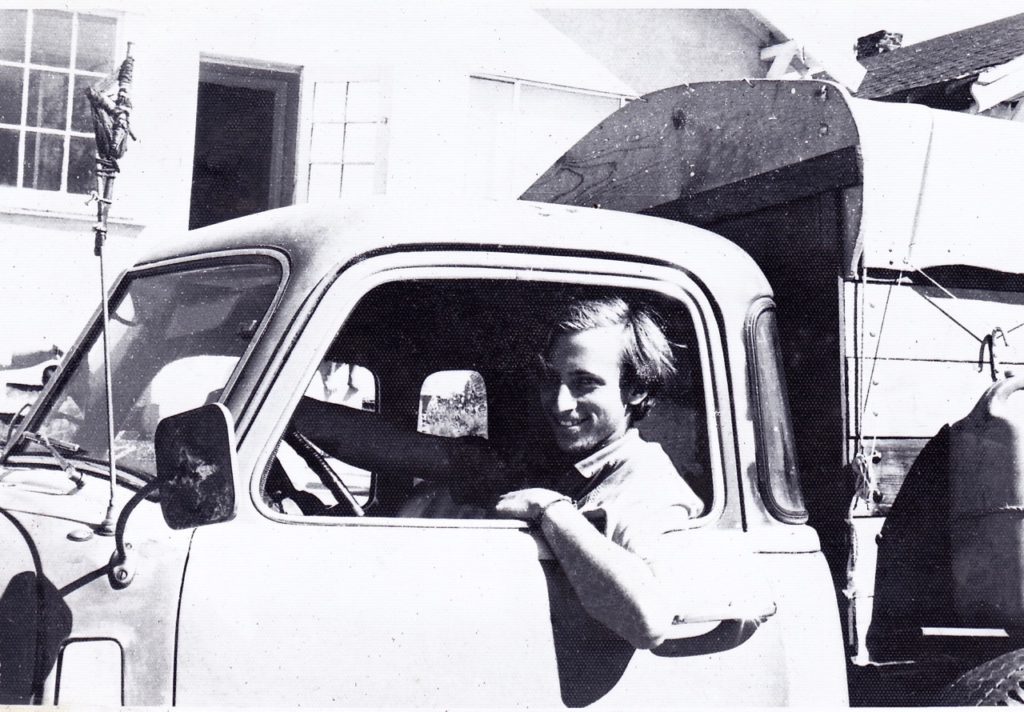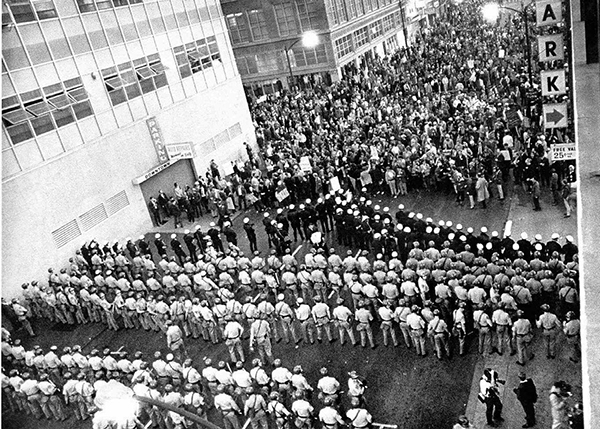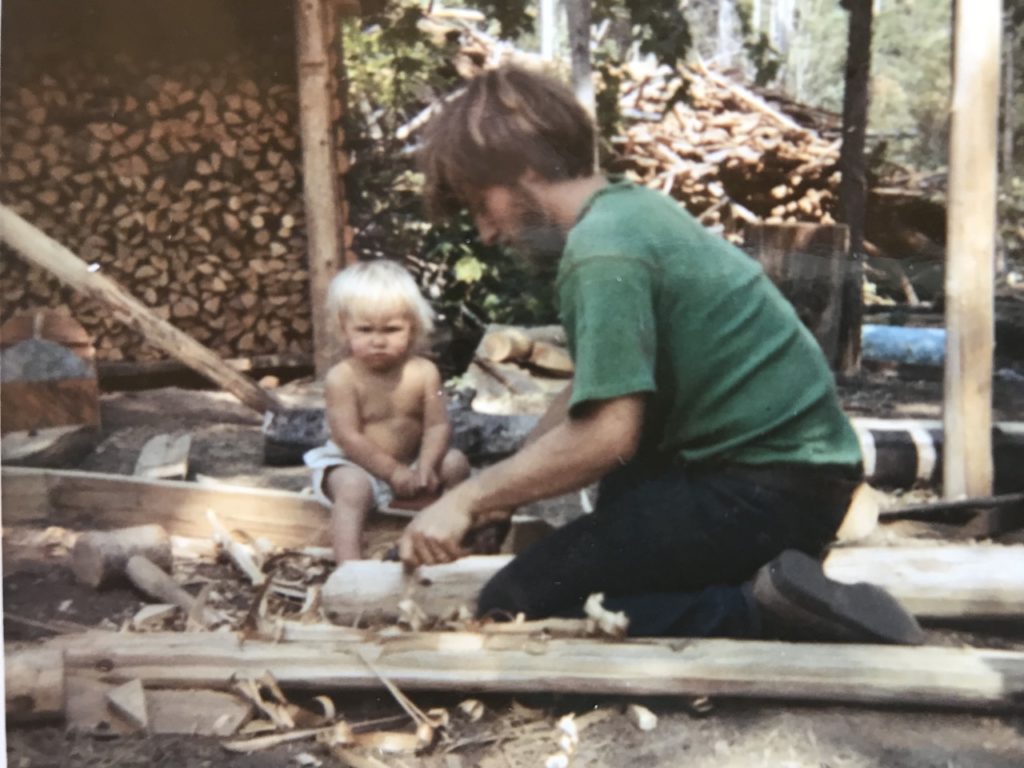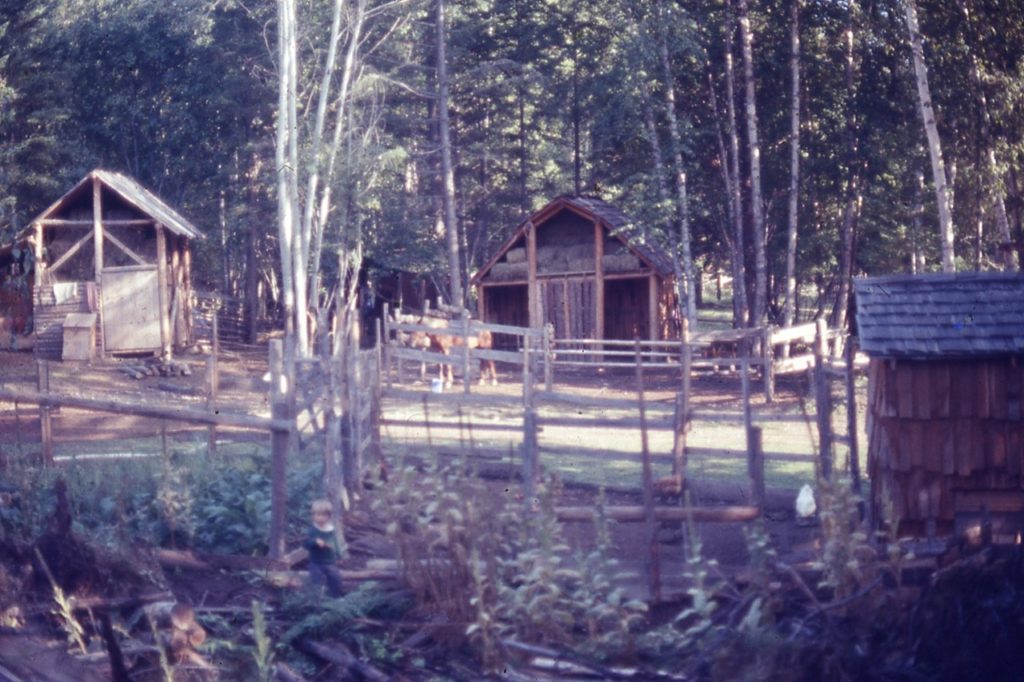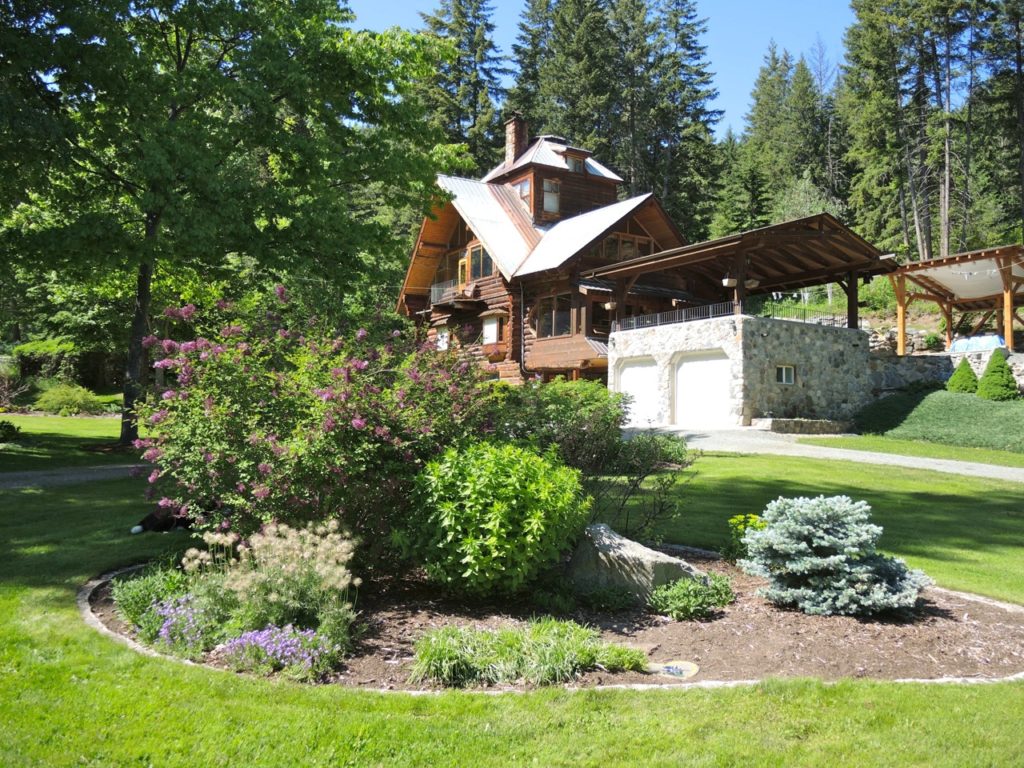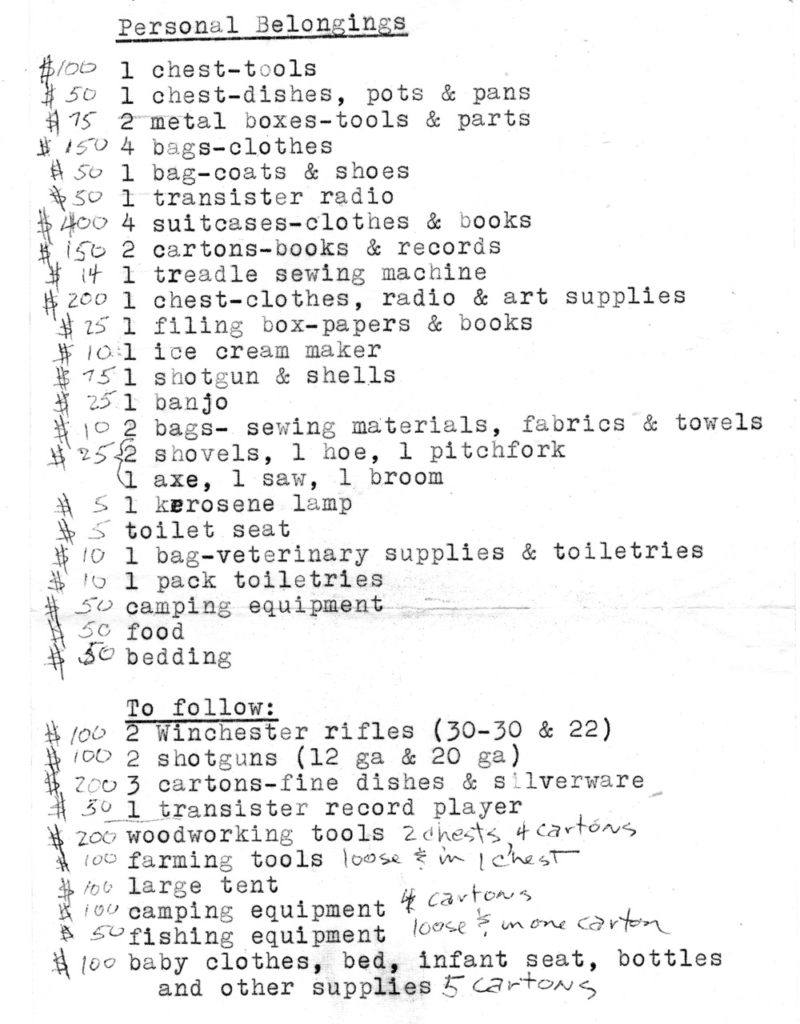At the wheel of “Lucy” the day we left Berkeley, California 50 years ago, note the ‘Gods Eye’ on the aerial
April 2019 marks a milestone in my life, as 50 years ago I crossed the border as a landed immigrant to begin a new life on our treed property above Shuswap Lake. The border guards must have chuckled when they saw us arrive in our 20-year old pick-up truck with my homemade camper that resembled a Conestoga wagon, two dogs, a cat and homesteading tools.
Here is an excerpt from a poem, At the Border, I wrote one year later:
Here I stand head in hand
I turn my face to the green mountains
Leaving behind that land filled with
Electric, antiseptic multi-component opponents
A product of United States Foreign Policy
Unable to make it with those people
I despised their evil ways
War over there, everywhere
I helped organize this 1967 anti-war demonstration in front of the Induction Center in Oakland, California
If it had not been for the illegal and immoral Vietnam War, I might now be at the end of a university research and teaching career, but there were only two options in 1969, prison or Canada. We were also part of the “back-to-the-land” movement, well primed by reading the Mother Earth News and the Whole Earth Catalogue.
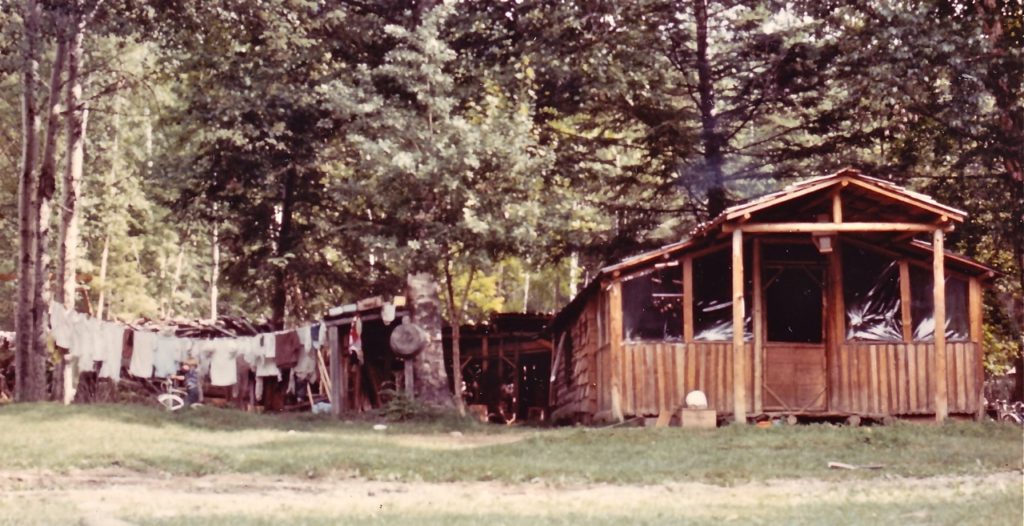 We built an addition on to our rustic log cabin for the kitchen. It had plastic windows for the first few years, circa 1972
We built an addition on to our rustic log cabin for the kitchen. It had plastic windows for the first few years, circa 1972
Once we arrived at our small rustic, log cabin, it did not take long before the harsh realities of homesteading, starting a family and earning a living began to take the sheen off our ‘living in the wilderness’ fantasies. After making some crude furniture, building an outhouse and busting sod to make a garden in the small clearing in front of the cabin, I went to work at the local sawmill in order for us to survive.
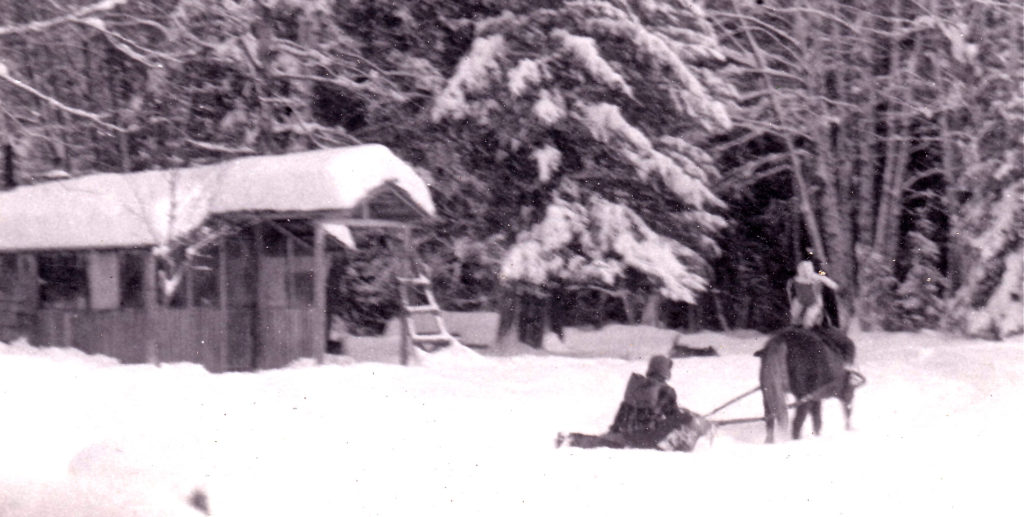 Heading to town in the winter began with our horse Whiskey pulling the sled and I down the hill
Heading to town in the winter began with our horse Whiskey pulling the sled and I down the hill
Many of our hardships were self-imposed, including cutting firewood by hand with a bucksaw or crosscut saw. After four years, we had three children, two horses, goats, sheep and chickens. The winters tested us the most, melting snow for washing, hauling drinking water from the well, trying to keep warm with plastic on the windows, and using our horse to traverse the two mile long snow covered logging road to our vehicle for trips to town.
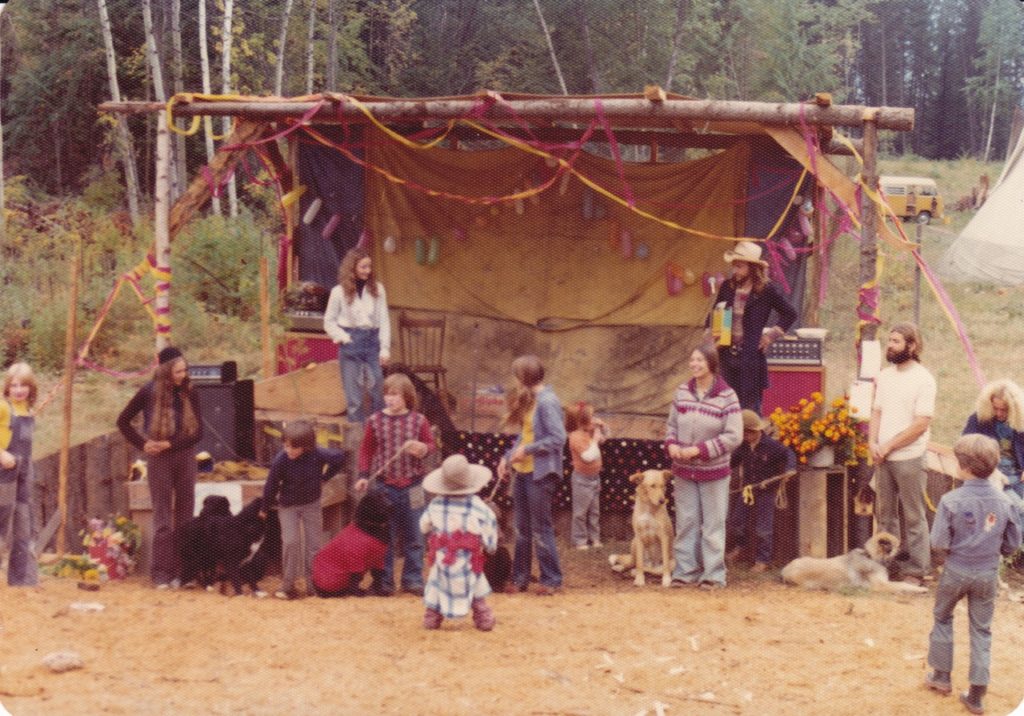 I was an emcee for our community’s first “Harvest Festival” in 1976, which included a dog show
I was an emcee for our community’s first “Harvest Festival” in 1976, which included a dog show
Overshadowing the hardships, were the many fun times we had as more folks joined us on the hillside to homestead too. There were work parties and many get-togethers with homemade music and much laughter. We went on trail rides, had feasts and spent many a late summer afternoon at the beach. We had the most fun at our annual festivals complete with parades, kids games, volleyball, dancing and skits.
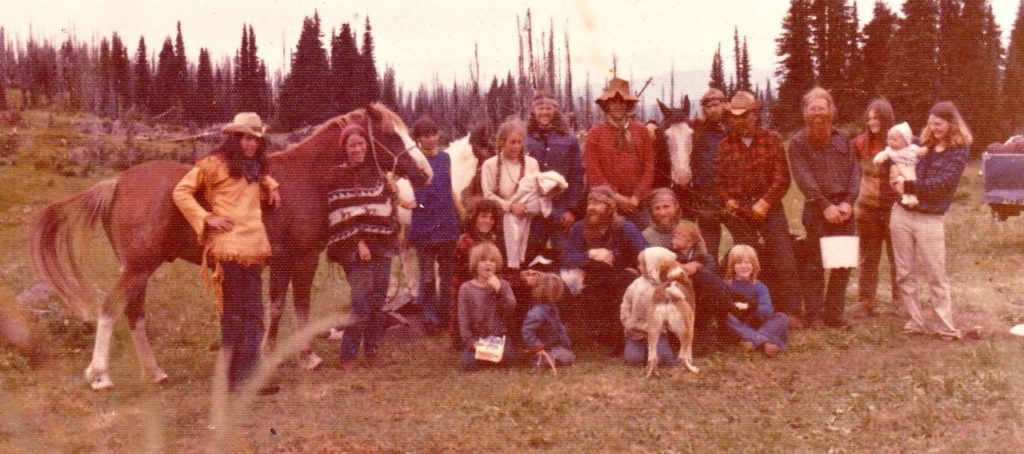 1973 trail ride to the top of Crowfoot Mountain
1973 trail ride to the top of Crowfoot Mountain
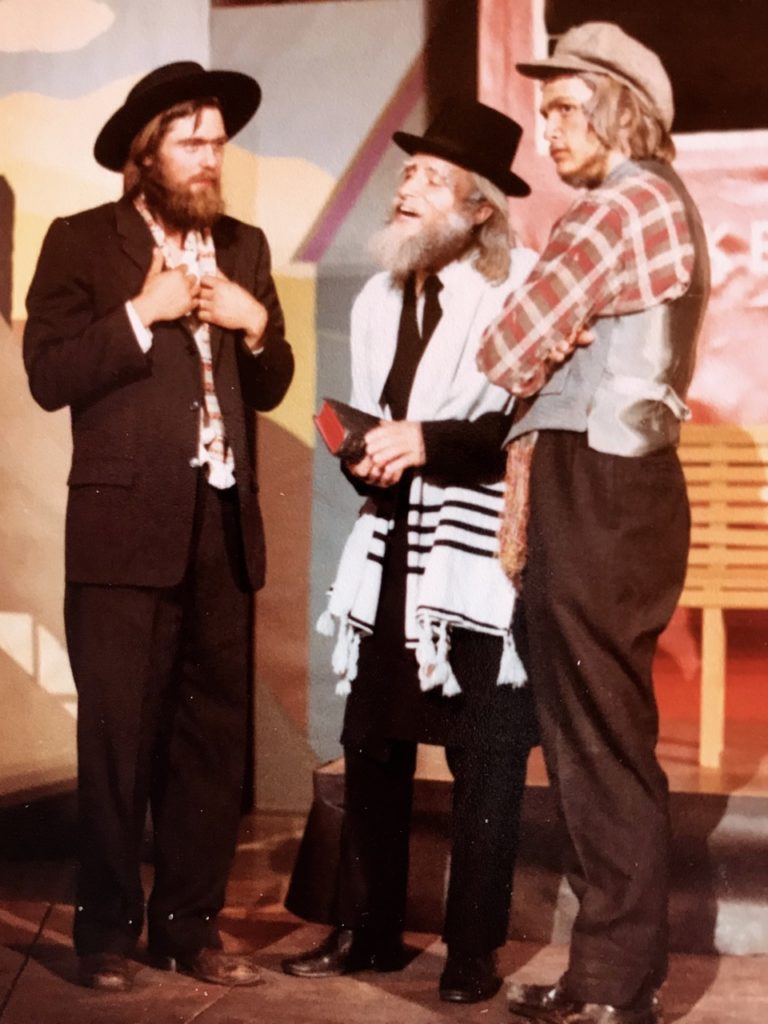 I was the Rabbi in Shuswap Theatre’s 1978 production of “Fiddler on the Roof”
I was the Rabbi in Shuswap Theatre’s 1978 production of “Fiddler on the Roof”
The passion that led me to the Shuswap carried on from the local community that developed on our hillside to many unique projects that served the larger community. From music promotion, to theatre, to local history writing and research, to decades of environmental advocacy and to writing and helping publish the first book about the Shuswap region.
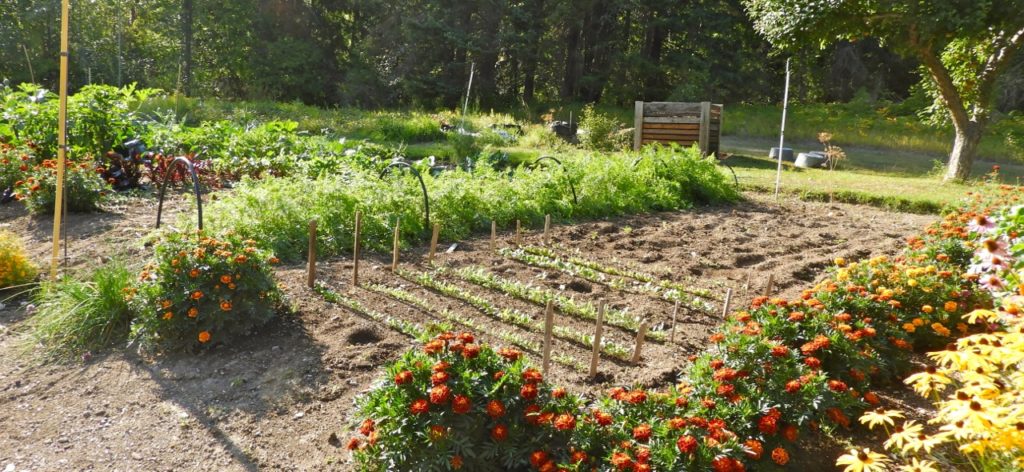 Late summer planting of greens for fall harvest in the 2018 garden
Late summer planting of greens for fall harvest in the 2018 garden
Working the land has been a constant over the 50 years, in tune with the seasons. Growing organic fruit and vegetables helps keep us and some friends well fed all year long, thanks, in part, to our root cellar. In some ways, the vision in the end of my 1970 poem, Earth Sausage, has come to fruition:
In the now isolated country
Where the creeks still run true and the deer abound
A race of people
Once almost run extinct
By mindless plastic butchery
Now turn their heads
With the patient balanced rhythm that nature intended
They raise their crops and children together
Play music, dance, and sing together
And mould the dirt, clay and wood together
To build a together space in harmony with the land
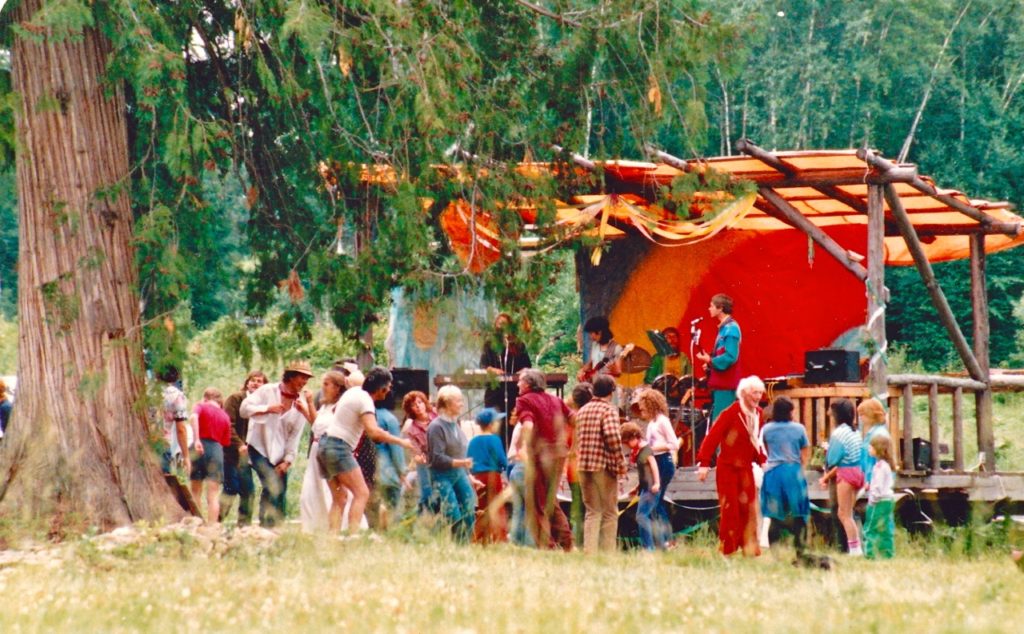 The Lee Creek community’s garden party in the early 1980s with the gang dancing to our local band, “Homegrown”
The Lee Creek community’s garden party in the early 1980s with the gang dancing to our local band, “Homegrown”
POSTSCRIPT
The smile on my face on the day we left Berkeley shows the joy I felt about leaving the U.S. to begin a new life in the wilds of Canada. Yet, underlying that smile, was the fear and stress of giving up a life of comforts to begin a new life in a world I knew very little about that would include hardships, along with the difficult physical work needed just to survive.
My first son watching me drawknife the components of the bed I built in 1970
In the late 1960s and the 1970s, many other young, urban “hippies” would also attempt to live in the country, either in communes or on their own. While some were successful, many others were not and ended up moving back to towns and cities to live a more normal lifestyle.
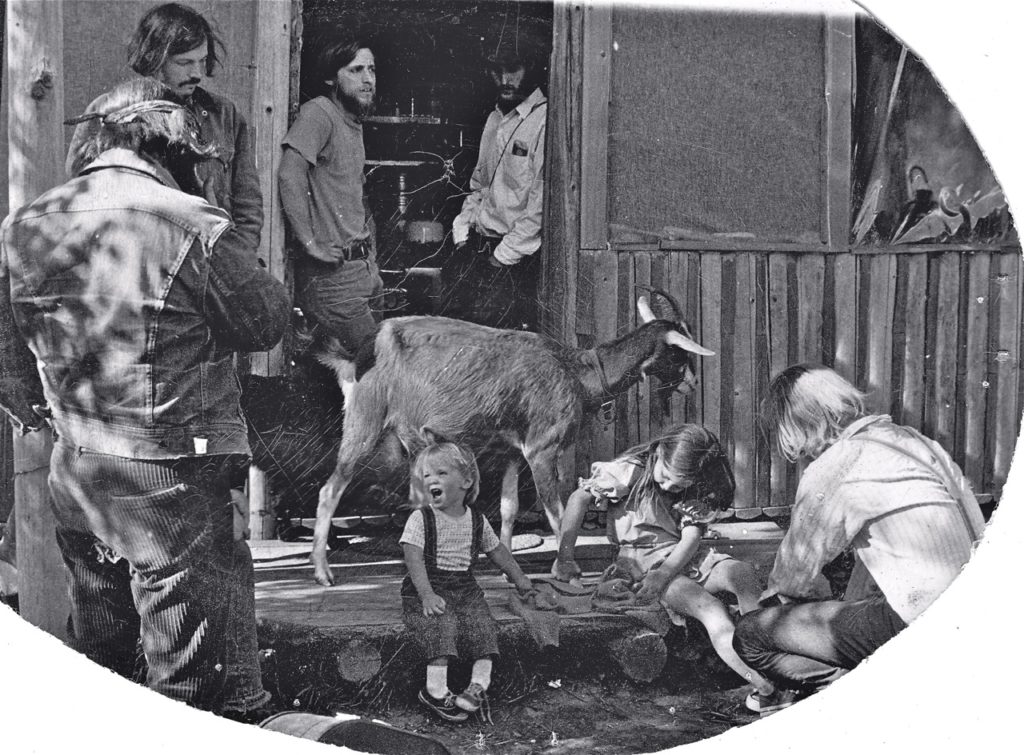 A typical scene in our lives, circa 1971
A typical scene in our lives, circa 1971
There are many reasons why I am still living on this property for the past fifty years, especially the support from my loving partner and wife, Kathi, who joined me here 39, years ago. As well, what began as five of us moving here from the U.S. (my former wife, her brother and his wife, and a close friend who only lasted five years before leaving due to his dislike of the winters), grew to a much larger group of back-to-the landers. We jokingly referred to the six families who homesteaded 80 acres above us as the “upper commune,” while our group living on our 80 acres was the “lower commune.”
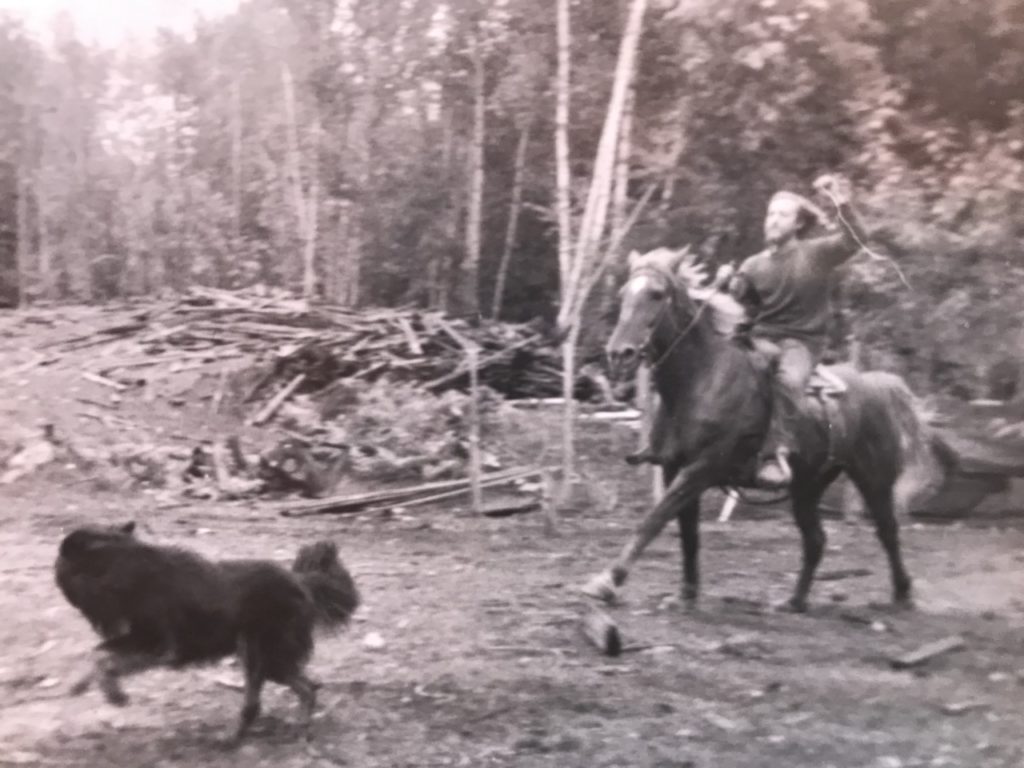 Having some fun with my horse, Whiskey. In the background, is the slab pile behind our cabin, which was left by the previous owners who had a small sawmill on the property
Having some fun with my horse, Whiskey. In the background, is the slab pile behind our cabin, which was left by the previous owners who had a small sawmill on the property
Initially, I had some other names for our property. At first I called it “God”s Eye” after the spiritual objects we made in Berkeley from sticks and yarn, like the one attached to the antenna of the truck we drove to Canada. This name was part of the spiritualism we felt living in the natural world, as opposed to the urban jungle we left. I later came up with a more humourous name for the property, the “Happy, Hippie Hobby, Hobbit Farm,” as the Hobbit trilogy was one of the key books we all read then. I also named the seasonal creek that flowed down from the hills through our property, Hobbit Creek and the bluff above our properties, Hobbit Hill.
Our Happy, Hippie Hobby, Hobbit Farm in 1972
Our “Happy, Hippie Hobby, Hobbit Farm” today
Perhaps one of the main reasons for sticking with it all these years was the vision I initially had, remained and guided me all these years. Here are some words I wrote on a scrap of paper years ago either just before we left the U.S. or shortly after we arrived:
We are like artists
We wish to make our own lives
We wish to align our bodies & minds
To nature, rhythms, cycles, changes of the witches’ season spirit
We can no longer relate to the
CONSUMER MARKET
ACADEMIC MOPPETS (“reading books, repeating quotations”*)
We drink teas & smoke grass
You stick to coffee & tobacco
You die of cancer & heart disease
From your pack-a-day habit
Your one drink a night
Your filet mignons & your chocolate éclairs
Richness in life is what we seek
Our image is health, beauty, and happiness
Not cosmetics, silver, gold,
Paper dollars & credit
We want to produce & design
All our necessities – our clothes, houses, and food
*Bob Dylan
Typed on another scrap of paper in my files is the list of items we brought into Canada on April 17, 1969 and the list of items that followed. A copy of this was given to the border guards, which was one of the requirements for entering the country as a landed immigrant.
